Using AI to Convert More Leads and Save Time written by John Jantsch read more at Duct Tape Marketing
Listen to the full episode:
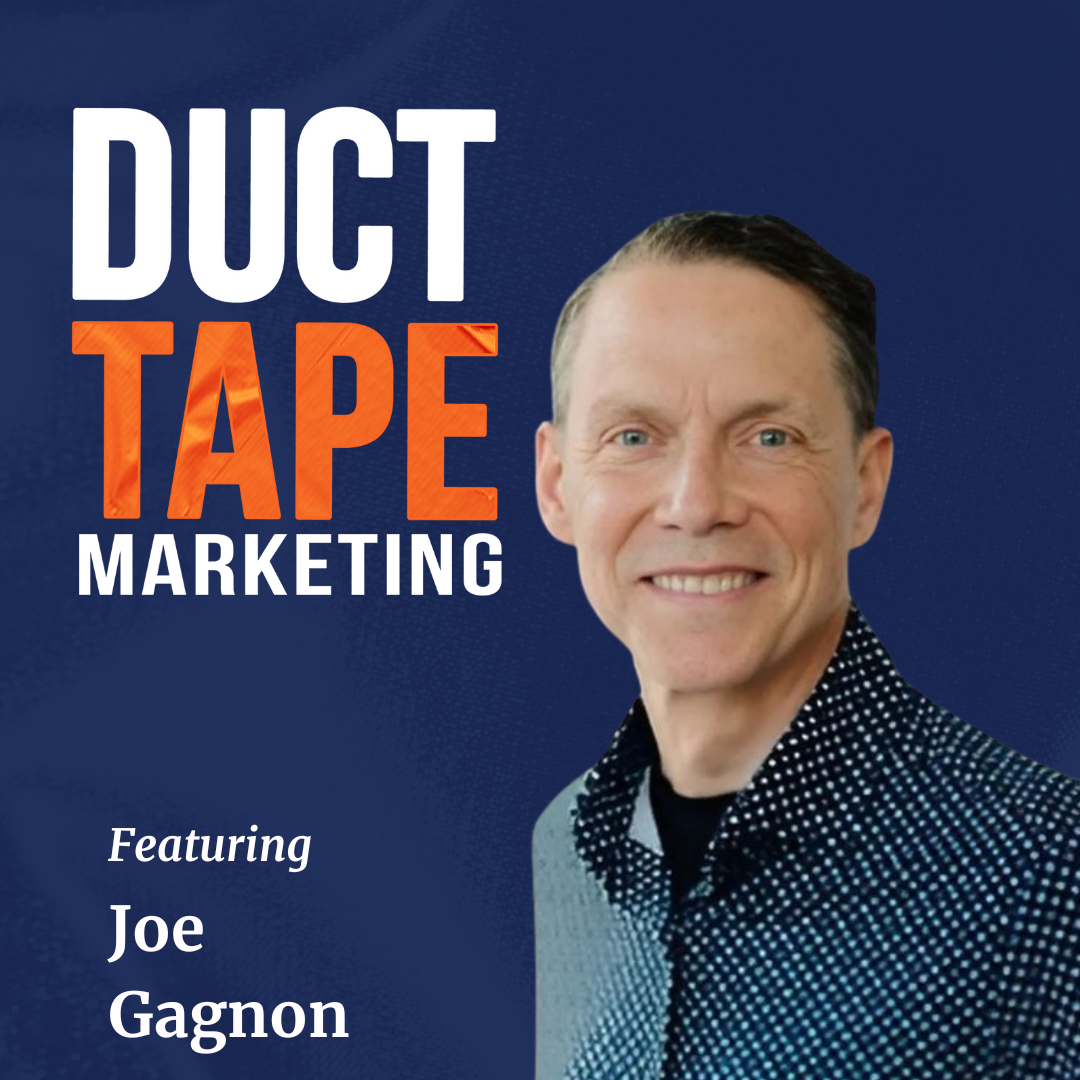 Overview
Overview
On this episode of the Duct Tape Marketing Podcast, John Jantsch interviews Joe Gagnon, co-founder and CEO of Raynmaker, an AI-native sales platform built specifically for small businesses. Joe shares how AI can take over the hardest part of running a small business—consistent, reliable selling—without sacrificing trust or human connection. They discuss AI-powered call handling, 24/7 coverage, better customer conversations, and why this technology may finally give small business owners their lives back.
About the Guest
Joe Gagnon is the co-founder and CEO of Raynmaker, where he’s building the first AI-native sales platform for small business. A longtime technology and customer experience leader, Joe is focused on combining AI, workflow, and human-centered design to help small business owners sell more, work less, and deliver better customer experiences.
- Website: raynmaker.ai
- LinkedIn: Joe Gagnon
Actionable Insights
- Small business owners didn’t start a business to “do sales.” Most want to deliver their craft and end up overwhelmed by lead follow-up, quoting, and closing.
- AI-native doesn’t mean “all AI, all the time.” Rainmaker uses AI for the conversational and learning components, but most of the platform is sales workflow and data integration.
- Pricing is designed to replace headcount, not add to it. At roughly $500–$1,000/month, it aims to be cheaper than hiring a person to answer phones—while covering 24/7/365.
- Trust comes from better answers, not just a human voice. Customers call because they want fast, clear information and reassurance. If AI can deliver that, many callers are satisfied.
- AI can improve sales and support together. Customers don’t separate “sales” from “support” when they dial; Rainmaker can handle both flows through the same number.
- AI conversations can be brand-tuned. The system can be trained on the owner’s voice, tone, and brand language, and adjusted for accent, gender, and style.
- Learning over time is the real superpower. Call transcripts and patterns can surface common objections, effective responses, regional differences, and new opportunities.
- “Outbound” can be redefined around customer timing. Instead of cold calls, think call-backs on forms, instant responses when interest is high, and follow-up on the customer’s schedule.
- This tech is about giving owners their life back. Less after-hours selling, fewer missed calls, and more predictable revenue.
Great Moments (with Timestamps)
- 00:21 – Why Reinvent Sales for Small Business?
How owners end up trapped doing sales they never wanted to do. - 02:21 – What “AI-Native Sales Platform” Really Means
Joe explains AI components vs. workflow and why it matters. - 03:54 – Leveling the Playing Field for Small Business
Giving small firms big-company sales capability at a fraction of the cost. - 05:47 – Automation vs. Authenticity
Balancing AI automation with trust, empathy, and real answers. - 08:11 – When AI Support Actually Feels Better Than Humans
Why customers just want fast, relevant help—no matter who (or what) delivers it. - 11:15 – Learning from Every Call
Using transcripts and models to improve responses and spot patterns over time. - 12:32 – Sales Use Cases: Inbound, Scheduling, and Payments
How AI can handle the full sales flow, not just FAQs. - 14:46 – Will Customers Prefer Talking to AI First?
Exploring a future where AI handles Q&A before any human gets involved. - 17:31 – First Steps for Overwhelmed Small Business Owners
Phased adoption: answering/summary, then scheduling, payments, and full integration. - 19:30 – Why This Tech Might Be the “Car After the Horse and Buggy”
Framing AI as the next major productivity leap for small businesses.
Insights
“Most small business owners didn’t start their business to sell—they started it to serve. Sales just got in the way.”
“If the AI gives you better, faster answers than a human, the customer doesn’t really care what’s behind the curtain.”
“We’re not trying to manipulate buyers; we’re trying to inform them so they can make better decisions.”
“The dream is: no more answering the phone at midnight, no more selling from the sidelines at your kid’s game.”
“Technology should remove friction and extend your capabilities—not make life more complicated.”
“_
John Jantsch (00:00.767)
Hello and welcome to another episode of the Duct Tape Marketing Podcast. This is John Jantsch. My guest today is Joe Gagnon. He is the co-founder and CEO of Raynmaker, where he’s building the first AI native sales platform for small business, combining his interest in technology, leadership and human connection. Today we’re going to talk about how AI is reinventing sales as we know it for small business. So welcome to Show Joe.
Joe Gagnon (00:25.826)
John, thanks for having me on. Love this show that you have.
John Jantsch (00:27.797)
Well, thank you, thank you. So I guess let’s start with what needs to be reinvented. Why are we reinventing sales?
Joe Gagnon (00:36.494)
I’m not sure that particularly we’re inventing sales, but how we actually make sales happen. And, you know, I’ve been selling since I was 16 years old. So I think I learned the essence of the conversation, but more than anything, you know, why is someone looking to buy something and how do we make that happen? And so what happened, you know, as I got inspired over the past year about the Rainmaker idea was small business owners don’t start businesses with the idea that they want to sell people. They want to deliver their service.
Home services, mow the lawn, clean the house, don’t know, walk the dog, whatever it might be. And then they start this business and they sell usually this early adopter, already want their service in their local community. And then they have to find like, oh my God, I gotta buy some leaves and I gotta talk to these people. Then I gotta convert them. Then I gotta turn them into customers. They’re doing this while they may be driving in their pickup truck to the next customer and it just gets harder and harder for them to actually have a life when they…
stepped into this idea of like American my own business make this work and now they’re stuck in the stock at the hardest part, which is the part that we wanted to focus on, is so we’re reinventing in the context of how a small business owner operates their business.
John Jantsch (01:52.437)
Yeah, it’s funny. I talked to many, many business owners of all, you know, every industry you can imagine. And if they’ve been in business for a couple of years, at least they realize now that 50 % of job is selling or getting sales. And as you said, a lot of them just want to swing a hammer. And so it really does make it tough. We use the phrase and I think this is straight out of your bio, AI native sales platform. What does that mean? I guess, and maybe describe it in the context of Marine Bank.
Joe Gagnon (02:02.924)
Yes.
Joe Gagnon (02:07.939)
Yes.
Joe Gagnon (02:15.518)
Mmm.
Joe Gagnon (02:21.824)
man, it’s like a good question. like, hasn’t AI sort of been around for 30 years, right? mean, you know, MIT and Marvin Minsky and the rest of the boys up there.
John Jantsch (02:30.559)
Well, just even our driving directions, things like that people don’t realize have been very powered by AI. We’ve been using that for a decade.
Joe Gagnon (02:35.542)
Yes. So the models that underlie the idea have been around for a long time. We’ve evolved to this thing called the large language model, which is giving more access to sort of regular people in terms of this token-based conversational creation in real time. So AI native for us is the parts of the workflow where we want to leverage AI
algorithms and technology, but the whole system itself, mean, we probably use 30 % is this AI part, 70 % is a workflow. It’s a sales workflow, it’s a data integration problem. But in the part of the conversational dialogue, yeah, there’s native AI where we’re going back and forth between our own LLM as everyone would call it or what an open AI might look like. But we’re also using
broader context of AI to mean machine learning as well. So the ability to leverage mathematical models to look for insights, to be able to bring out derivative perspectives that you wouldn’t have been able to do with just a normal database. So that’s the AI native part of what we’re doing.
John Jantsch (03:54.517)
So a lot of small business owners don’t have the budget or just don’t really have the wherewithal to put together an operations team, BDRs, closers, whatever all the roles would be. But in a lot of ways, is this leveling the playing field a little bit for that smaller company?
Joe Gagnon (03:57.902)
you
Joe Gagnon (04:10.99)
That’s the hope. know, there’s a language that everyone started using, which is like democratize capability, access to systems and all of that. I think that the fundamental thesis that we took to this was actually literally to say, what would the small business owner need and what could they invest to make this kind of transformation happen? Because actually, if this works, I think we give them their life back. They’re not sitting at the soccer game with their phone connected to their ear. They’re not driving and texting in their pickup truck or whatever vehicle they might have.
John Jantsch (04:16.053)
Yeah, yeah, yeah.
John Jantsch (04:39.977)
Yeah.
Joe Gagnon (04:40.174)
that our price point, you know, on the low end, it’s $500 a month, on the high end, it’s $1,000 a month. This is less than hiring a person to answer the phones. We can cover you 24 by 7 by 365, learning off of your dialogue, your brand, your voice, and leveraging our sales expertise, our workflow, our database, and the combination of which should allow that business owner to grow as much as they want.
They don’t have to look. mean, some business owners have told me in the past, look, I don’t want more business than I have today, but I just want it to be predictable. I don’t want the ups and downs. I’m spending so much money on leads. I don’t even know what I’m buying. And so we’re trying to get this to where that American dream is not so daunting. And actually that I mean, look at John, I can’t believe how many people want to start their own business. What are they thinking? But maybe we could actually make that
know, emotional journey better and turn it into something that doesn’t dominate their life.
John Jantsch (05:47.113)
One of the, I think, fastest ways to erode trust in marketing is when things feel very automated, very inauthentic. We all get the AI spam now. How do you kind of balance that? Automation’s great when it reduces friction. It’s bad when it kills relationships.
Joe Gagnon (05:57.624)
Yeah.
Joe Gagnon (06:09.538)
I think it’s a great question and there’s a balancing act that we’re going to have to play over the next year. I think if we were a year from now, we’d be really hard pressed to find the difference between a voice generated by AI or a person’s voice. So we’re not far away from that. Our thesis is this, the consumer is making a phone call because they want more information and because the website didn’t provide it, the product didn’t provide it, or they just have some emotional support that they want. And so,
To the degree that we can give them better, even if it is a little bit robotic, or you can notice it’s an AI, but if they can give you what you need, like, think about this example, you know, we have a lot of pest control customers, someone’s gonna spray for mosquitoes in the backyard, and the parents, and gosh, I got kids and a dog, I’m wondering, is this safe? They just wanna ask that question. They would probably love to get the owner, but it’s unlikely.
So what if someone sounds enough like the owner and knows it enough to be relatable and answer the question effectively, not just in a marketing way, the depth of, hey, this is organic. Here’s how to think about it. Here’s what we’ve heard from other customers. Here’s things to consider. And so I keep believing that what the consumer is looking for is just more better information when they need it. And this is the starting point. Now,
Probably everyone won’t adopt this within a year because they will be skeptical. And as they experience it more and more, it’ll get better. Look, I’ve run call center businesses in the past. What I’ve heard more than anything is I don’t want to talk to people who, well, I can’t even talk to them because you have an IVR. Number two, when I talk to them, they don’t know anything. Number three, I can barely understand them, right? That’s the experience to date. We think we can leapfrog over that by bringing this brand context.
and a voice that we can understand that’s available whenever we want. Because imagine midnight on a Saturday, you just want to ask that question like you can’t do that today.
John Jantsch (08:11.069)
I would totally agree with you. I don’t think we care what the technology is as long as we get what we want. And I have interacted, I’m sure we all have, with customer support bots now that are there in every software. And when they’re just maddening, it’s a terrible experience. But I’ve also got a couple of software platforms I interact with a lot, and I get the answers I want.
Joe Gagnon (08:18.03)
Mm.
John Jantsch (08:40.661)
And to me, then I’m like, I don’t need to talk to somebody in support because I got what I wanted.
Joe Gagnon (08:48.14)
Yeah. You know, it’s interesting also, like what we see the integration of sales and support coming together. Like the customer doesn’t think about those differently. And often they call the sales line because they’ll answer and they ask the support. So.
John Jantsch (08:59.689)
Yeah, right. You might spend money with us. Of course we’re going to answer.
Joe Gagnon (09:05.006)
Yeah, so we want to like say, hey, it doesn’t matter. Call the same phone number and bring your sales opportunity or your complaint. I think about this, even in the non-small business area, we’ve been talking to some pizza chains. Like you order your pizza, it’s great. Hey, it came with no pepperoni. I want to call back the same number and get it resolved rather than send an email or try to call the store. We can get that resolved. I think the integration from John, I’ve been working on customer stuff for 30 years.
I think it’s the first time we might be able to, for the first time, really delight a customer because we’re going to work and live the way they do, not the way my business says, I can’t answer the phone now. It’s too expensive to do this. I’m to put technology in the way because it’s just too expensive. We’re going to try and normalize the expense of this and the experience so that it becomes magical. we’re going to, you’ll see on our website soon, we’re going to put up numbers people can call and try.
and see what it sounds like. And they’ll experience it and they’ll be like, well, maybe this is what the future could be like. Because imagine if it is.
John Jantsch (10:11.081)
I tell you a couple of markets I’d like you to target credit card companies and airlines. Could you get them on board?
Joe Gagnon (10:18.882)
You know, my God, I fly a lot and I sort of wonder, you but you know this, like it’s the same as your cable company. I call them up and try and get something like you can’t, you can’t even figure it out. I think this is one of the areas where AI will advance the ball. And because this is under the owner control, it doesn’t have to turn into a marketing vehicle.
They don’t really care about that. They just want predictability and they want their life back. And if we can deliver that for them, you know, this one feels like probably one of the most sort of beneficial systems I could have worked on.
John Jantsch (10:59.913)
Yeah, well, and you’re absolutely right. Those IVR systems from the past, I they basically had a tree of options. If you didn’t fit into one of those options, you were kind of out of luck. Whereas AI can essentially have infinite options for what you’re after.
Joe Gagnon (11:15.406)
Yeah. And I think the other thing is that we learn as we go. So you get all these transcripts, you start to see a pattern. So imagine someone had 50 locations. Well, they never saw the data pattern across all of that. In the future, we can run this into our large language model and ask questions like what worked, what didn’t work, where the objections, how do we handle objections in the future? How could we nurture this customer better? We can learn.
John Jantsch (11:22.644)
Yeah, yeah.
John Jantsch (11:42.655)
Well, or even more, like, in this part of town, they care about this. In this part of town, they care about that. And it’s like personalized to the store level.
Joe Gagnon (11:49.034)
yes!
Yeah, we have found one thing that we thought people would like personalized, and then they changed their mind. So regional accents, for example. So we had a customer who said, we would love a Southern accent. And we put it in there like, no, we actually didn’t really want that. That was too much. So they said, how about that Midwestern one? Female versus male. But we can regionalize, and we can make it feel to the brand more than you could.
We know this, we would love to be able to hire people and have them be experts day one and have them get better all the time. Sadly, that doesn’t happen, but we can do that actually with AI.
John Jantsch (12:32.636)
So talk about some very specific use cases that a small business owner, I mean, are people using this for outbound or is this all really kind of inbound customer service support?
Joe Gagnon (12:39.533)
Hmm.
Joe Gagnon (12:45.312)
Yeah, so this is a good question because we’re going to reframe this idea of outbound. Like why does outbound happen? Outbound is typically a sales process, right? But that’s because the customer can’t talk to you when they want to talk to you. So we’re going to redefine outbound in the following way. If you come and fill out a form, you should be able to talk to someone at that point. You should be able to schedule when you want to hear from someone. You should not be throwing your name out into the ether hoping that someday someone actually gets back to you.
When they inbound or this outbound, you never answer who wants to answer from what call might even look like spam. So one, we want to make it work to the prospect or this potential customer’s timeframe and interest level. This is starting first as a sales platform, which is someone has demonstrated some interest. Maybe they got a Google lead or they got a web form filled out or something to that effect. And they want to reach out to us.
When they call the company phone number, it would ring into our AI and the AI would have that dialogue with the person. They’d go through the conversation, hopefully overcome any objections. And then they’d say, would you like to go forward with the sale? If they say yes, then we do auto scheduling into a calendar. We take payment and then we summarize that data for the owner and update the CRM system. So that’s the first use case really is sales inbound.
John Jantsch (14:17.34)
So do you think that one of the things we’ve really witnessed over the last few years is people are going, because they can, farther down the journey before they ever pick up a phone or contact their business. So much research we can do. A lot of people are putting pricing or least calculators on it so that somebody can actually almost be ready to buy before they even raise their hand. Do you see, and I think a lot of that has to do with you start to talk about, people don’t want to talk to a salesperson. They don’t want to be sold. It’s a hassle.
Joe Gagnon (14:38.915)
Yes.
John Jantsch (14:46.015)
to like schedule an appointment and then meet it. So do you see this actually becoming a tool that people will say, I’ll talk to the AI bot before a human, because I can get the information and I don’t feel like the AI bot’s not gonna pressure me to do something.
Joe Gagnon (15:03.638)
Yeah, you know, so that’s a great question, John. So when we started the company, the first thing I did was write our manifesto, you know, what do we believe in? But the second thing that I wrote was our brain maker constitution. And that constitution is a set of responsibilities we want to uphold, which is we are here to inform the customer on behalf of the owner. We’re not here to manipulate. We want to make them make a better decision. We believe that when they do, they’ll buy more. And so
We actually want the AI to be more about informing. And if it gets the person to the place where they want to buy, they should be able to do that easily. But it’s OK if they use it as a place to get knowledge and to learn about the brand and about the products. It is not meant to manipulate and try all of those sales tactics that a person would do. And we can actually program it that way. That’s why we wrote the Constitution.
John Jantsch (15:52.684)
Yeah. Yeah. Well, what I’m getting at is, mean, imagine doing like a webinar or something. And then typically the CTA is like, know, schedule with one of our advisors, right? Well, now imagine if you say schedule with our AI, it’ll answer all your questions. You won’t have to know anything or do anything. It’s not going to try to sell you anything. It’ll just answer your questions. And then if you want to move forward, you can schedule as a human. Do you see a day where that exists?
Joe Gagnon (15:58.414)
Mm-hmm.
Yep. Yeah.
Yeah, yes.
Joe Gagnon (16:18.542)
I think the first part for sure, but I don’t know that you’ll ever need to talk to the human because this should be as good, but we can do the two-step process. And look, I think it’s up to the owner. If they want to provide information and we want to provide information on their behalf. The reason they might not do it now is they’re like, well, every time I talk to you, I should close you. It costs me more to talk to you another time. But the way we sell our platform, it doesn’t matter if we talk to you one, three or five times. We’re there to help that person make a decision.
John Jantsch (16:23.285)
You
Yeah.
Joe Gagnon (16:47.842)
This comes back to my sales experience. My most effective selling has always been when I have a more informed consumer or buyer. They buy better. it’s when a salesperson, that’s right, but when a salesperson tries to manipulate, you often don’t get to the outcomes you want. So we’re really rethinking this entire buying relationship with this process.
John Jantsch (16:58.242)
price goes down the list a lot of things.
John Jantsch (17:13.705)
Yeah, interesting. So if a small business owners listen to this and they’re like, this is all overwhelming. I don’t, you know, I know I need to get into this, but like how, what are some of the first steps that they need? And some of them are going to be mindset, right? Before technology maybe.
Joe Gagnon (17:24.494)
Yeah.
Joe Gagnon (17:31.085)
Yeah.
Yeah, I wouldn’t, this is like a funny way to say, but you know, we have three versions of our platform. The first is the anytime agent that’ll just actually do the answering for you 24 by seven or off hours or weekend, but just take the call and summarize it for you. It’s a way to say, I wonder how my customers interact. Then we can move into scheduling or payment and then on the full way to the full blown solution with integration and so on.
So part of it is maybe you need to explore what it would be like. The second is, you know, to listen in and hear what calls are like and get an experience and say, wow, maybe that’s not so bad. I think the third thing is to start to look at, you know, what the constraints are that you’re going to have into your growth plan. Do you want to make a commitment to hiring people? Do you want to spend that additional capital?
or would you like to put in a learning system? And so I do think that it’s a bit of a step back to say, how do I want to run the business going forward? Do I have the capability or do I want to get back to the reason why I started this? So yeah, it is a bit of soul searching, but at the end of the day, I think if you go back to why you start a small business, it’s because you want to get the product that you believe in in the hands of a lot of people.
and the sales part gets in the way. And I’ve never met a small business owner who says, the reason I want to start the business is because I want to sell. And so I think that it’ll become more normal. we’ve been going to a lot of trade shows. We do presentations. We have a booth. People are just like, are going beyond just curious now. They’re like, I really should be considering this, shouldn’t I? Now in every technology adoption curve, got
Joe Gagnon (19:17.964)
early adopters, early majority, late majority laggards. There’s some people who will never do this. And amen, that’s fine. But if you want this to work the way you want, then it’s probably worth looking at.
John Jantsch (19:30.438)
Yeah, I mean, I’ve been doing this long enough that there were people that swore they would never ever have a website. you know, we come a long way, don’t we? So, Joe, I appreciate you stopping by and introducing us to the tool. Where would you invite people to find out more, connect with you?
Joe Gagnon (19:36.204)
Right. Exactly, right.
Joe Gagnon (19:51.468)
Yeah, you know, Rainmaker with a Y, R-A-Y-N-M-A-K-E-R dot A-I. That’s our website. Now I’m on LinkedIn, Joe Gagnon. You can always check me out there. I have some fun things that I’ve done in my life that’ll tell you a little bit why I started this and what I believe in. And, you know, appreciate, John, you having us on. We really are committed to
sort of democratizing this capability at a price point that makes it easy for a small business owner so that they can sort of, you know, lean into this American dream and, you know, perform maybe better than they ever thought was possible. That’s what the idea behind technology is, right? This isn’t supposed to make it hard or scary, just make it better. And let’s, we’re going to hold ourselves to that.
John Jantsch (20:37.621)
Yeah, I’m 100 % on board with technology that removes friction, that allows me to do something the way I want to do. I’m all for it. And I think it frees us up to do the human parts that technology will hopefully never be able to do.
Joe Gagnon (20:54.188)
Yeah, I, yeah, well, boy, I’m sure we could have a whole nother podcast on this, but you know, I don’t believe that there’s some big bad AI in the future. You know, we are going to use this to our productive benefit. We’re early, right? We’re still early in this journey. There’s a lot of noise around it, but as we bring out applications like we’re working on, I think people are going to start to say, wow, this actually can be very productive for us. So we’re excited about that.
John Jantsch (20:55.317)
You
John Jantsch (21:12.201)
Yep.
John Jantsch (21:22.67)
Yeah, and I think also, just like all technologies, the more people experience it and have a good experience, there would be less resistance, because they’re like, OK, that change wasn’t so hard. That’s right.
Joe Gagnon (21:28.184)
Hmm.
Joe Gagnon (21:34.446)
That’s right. We’ve lived through many of them, right, John? mean, everyone knows those back and says that, you know, we weren’t going to leave the horse and buggy and came to a car and now we can’t live without it. I do think this one is really fascinating because it extends us maybe another order of magnitude than we could have otherwise. And we’re so committed on this price point because
you know, in small business, we understand that these are tight margins and, you know, we want to make this very accessible to people. And, you know, there’s 30 million small businesses in the U.S., probably 10 million who could be in our target profile. We could get hundreds of thousands doing this, then wow, we’d all do better because it’s the lifeblood of the economy really at end of the day.
John Jantsch (22:12.905)
Yeah, yeah, yeah.
John Jantsch (22:21.267)
Yep. Well again, appreciate you taking a moment to stop by the Duct Tape Marketing Podcast and hopefully we’ll run into you on these days out there on the road,
Joe Gagnon (22:28.664)
Thanks, John. Appreciate it.
Sign up to receive email updates
Enter your name and email address below and I’ll send you periodic updates about the podcast.
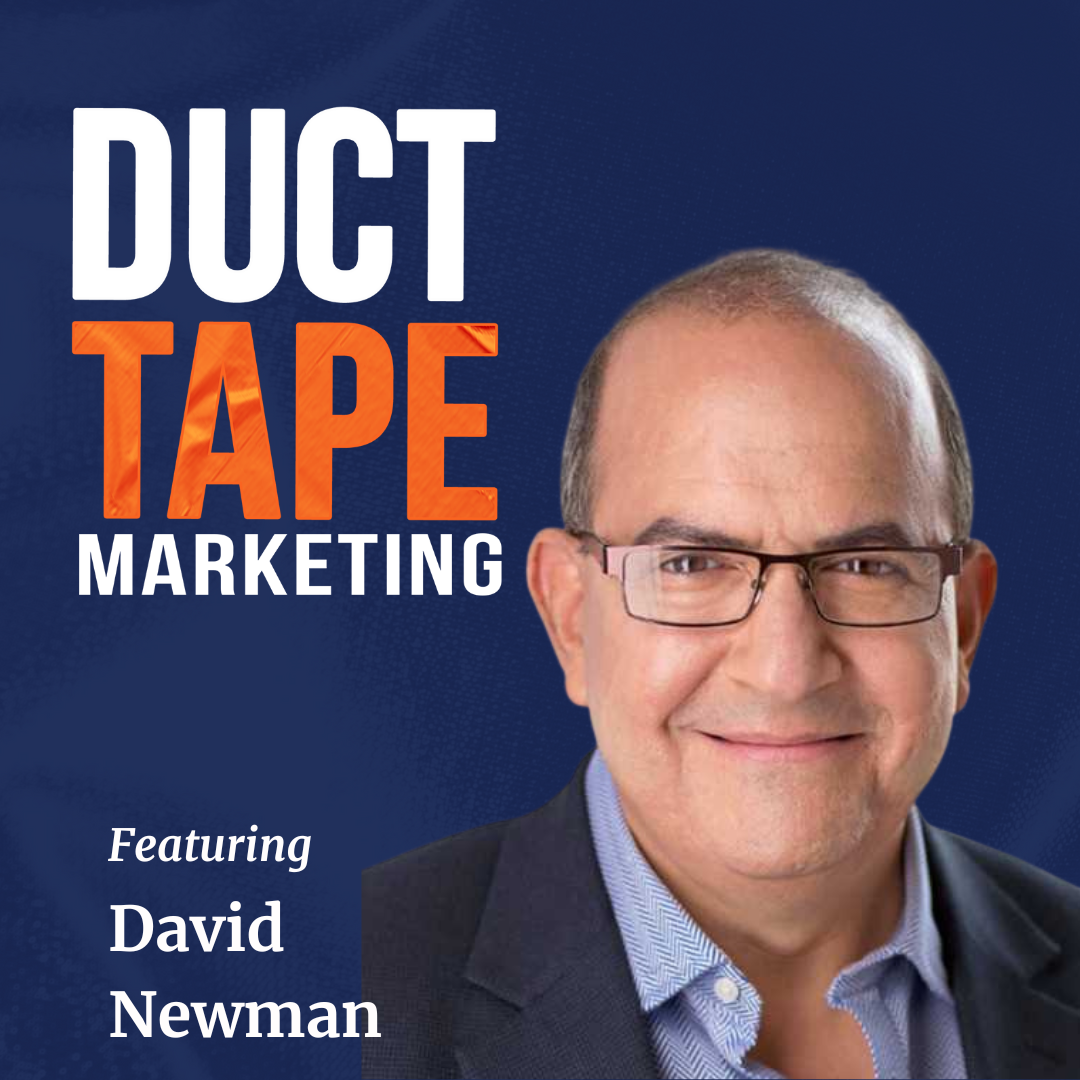 About the Guest
About the Guest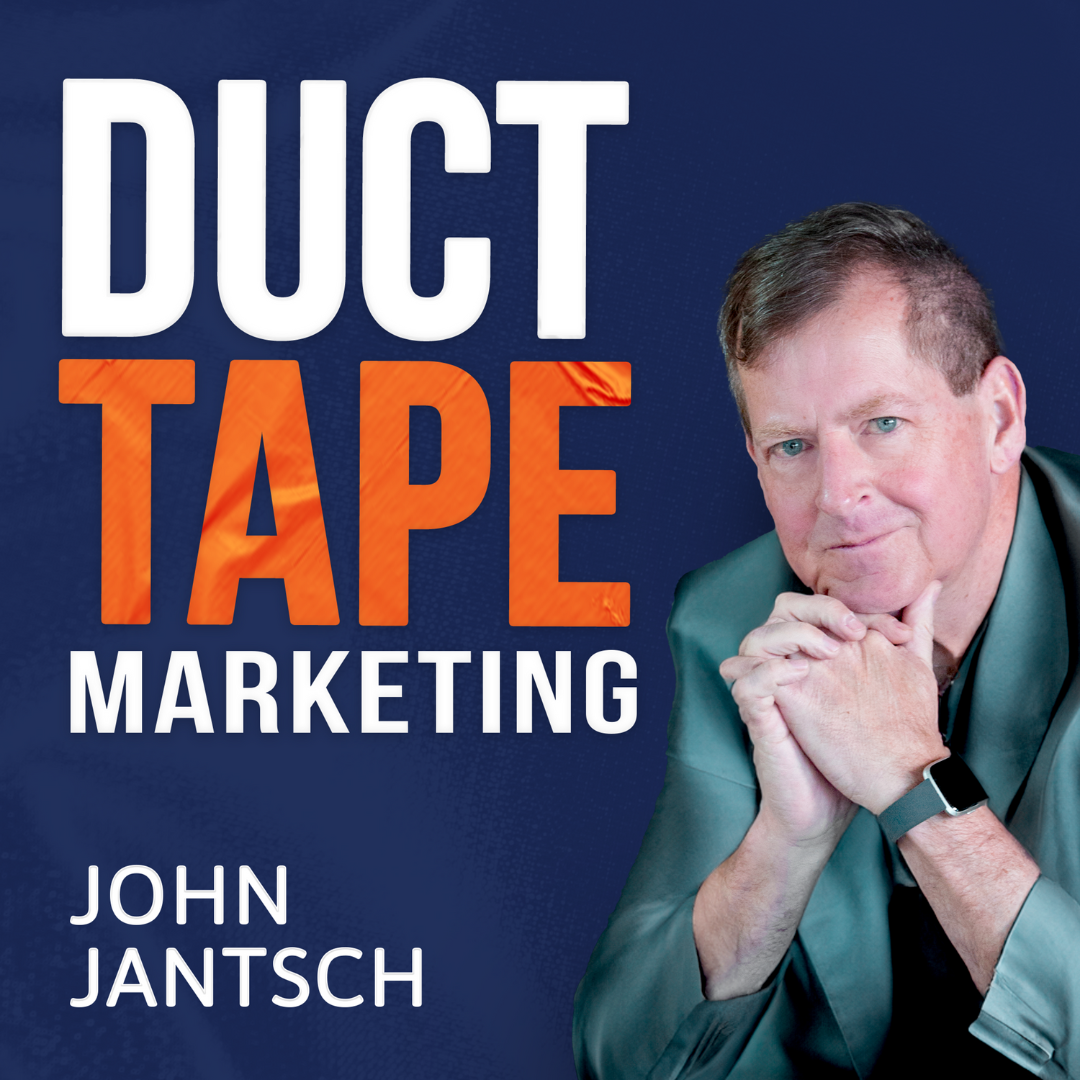 About the Host
About the Host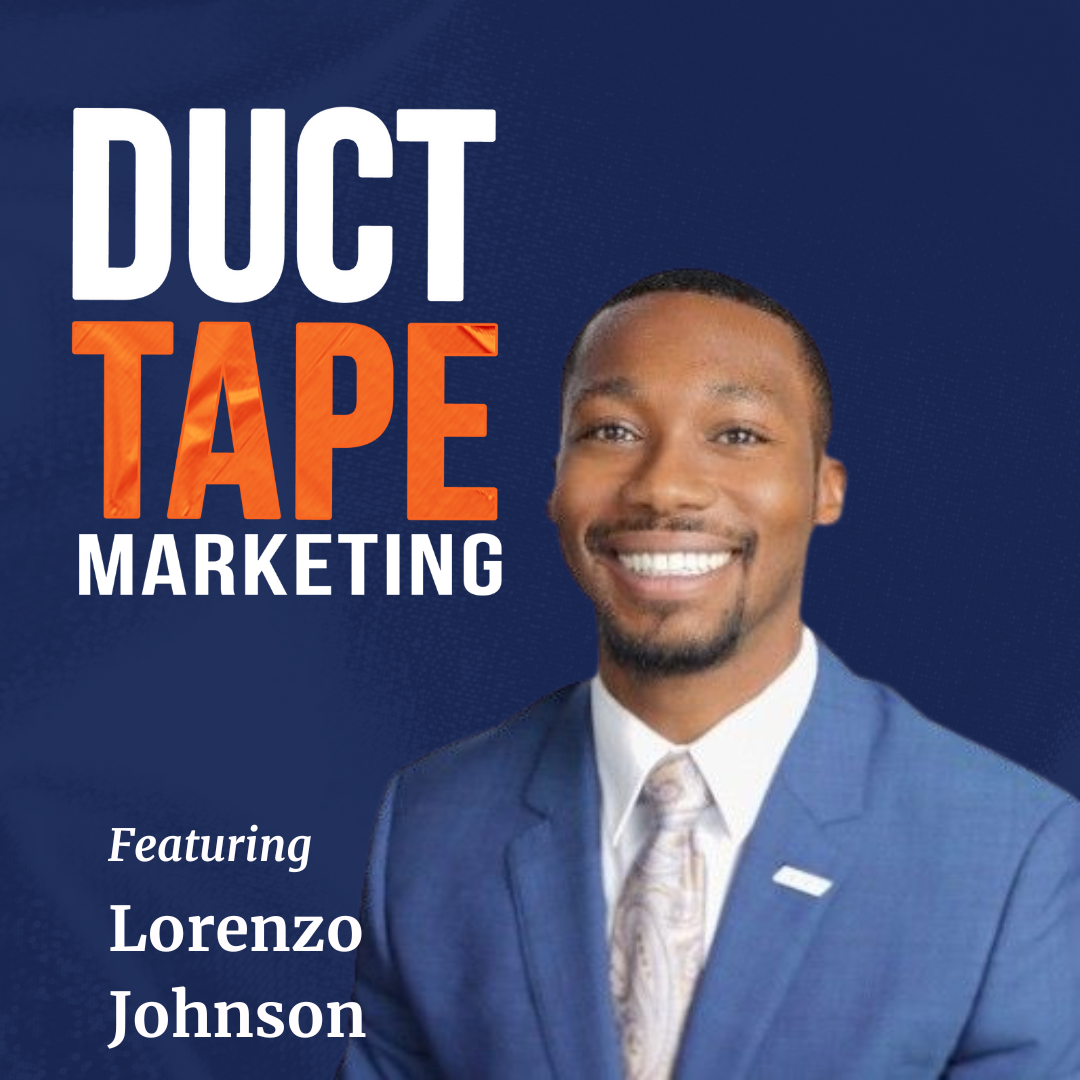 Overview
Overview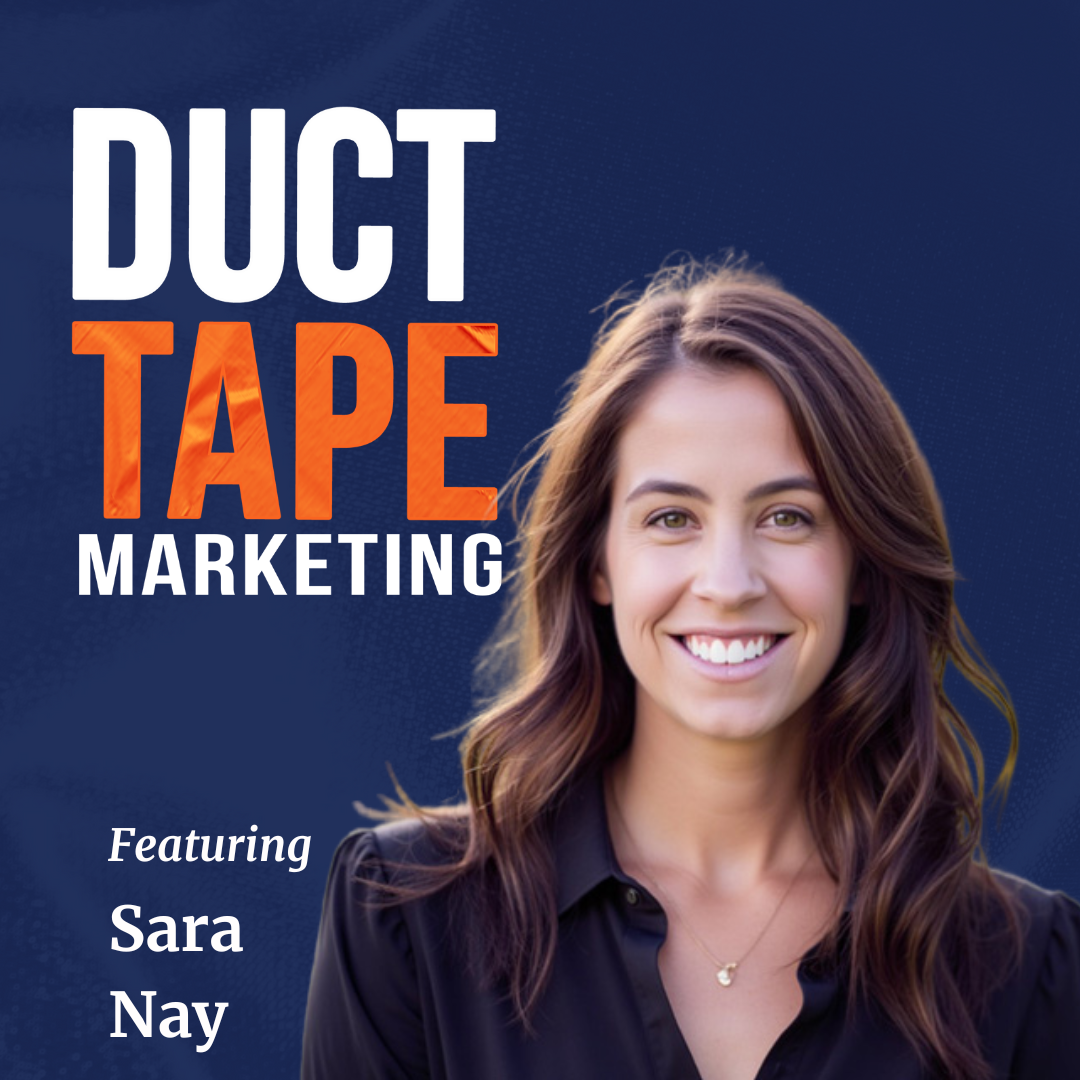


 Overview
Overview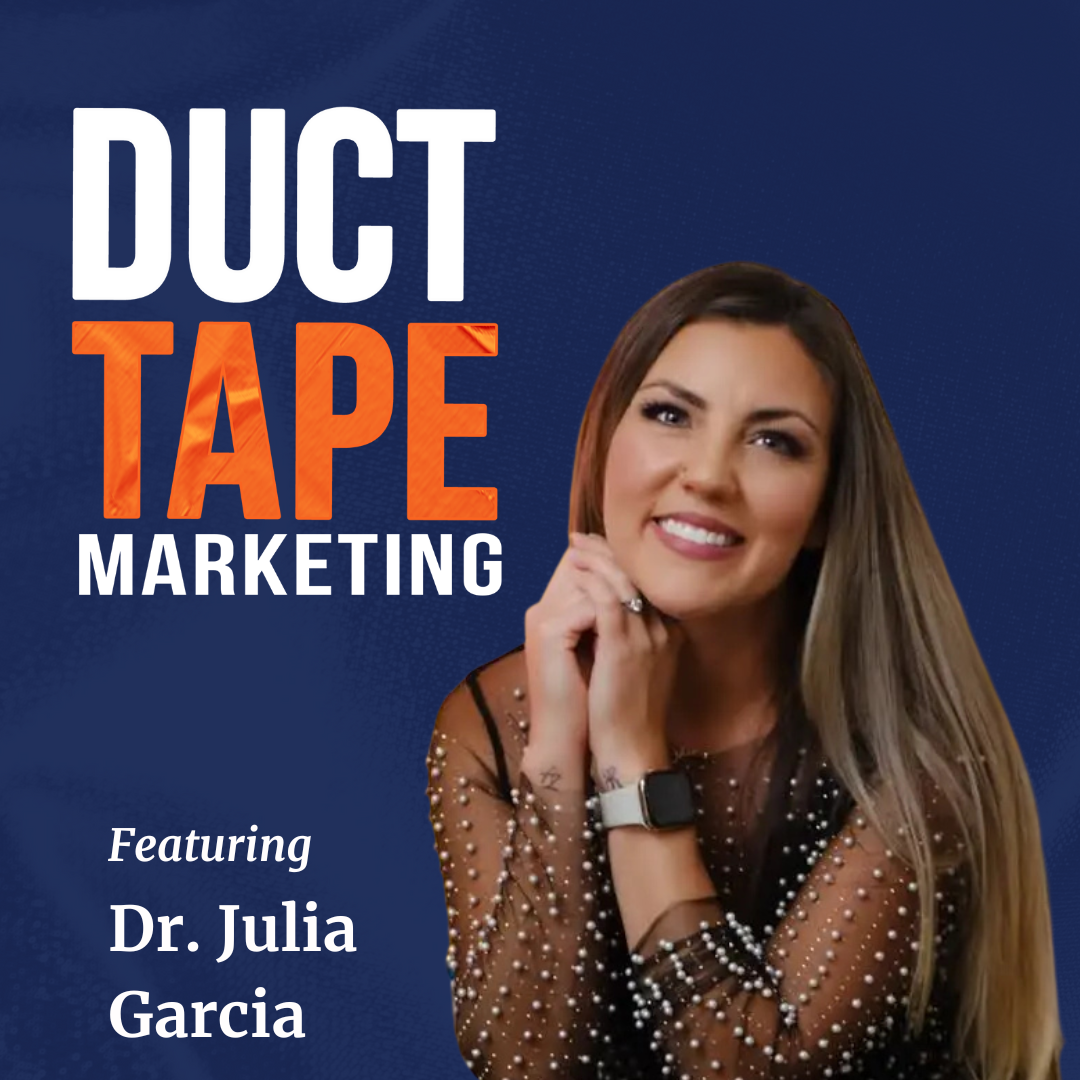 Overview
Overview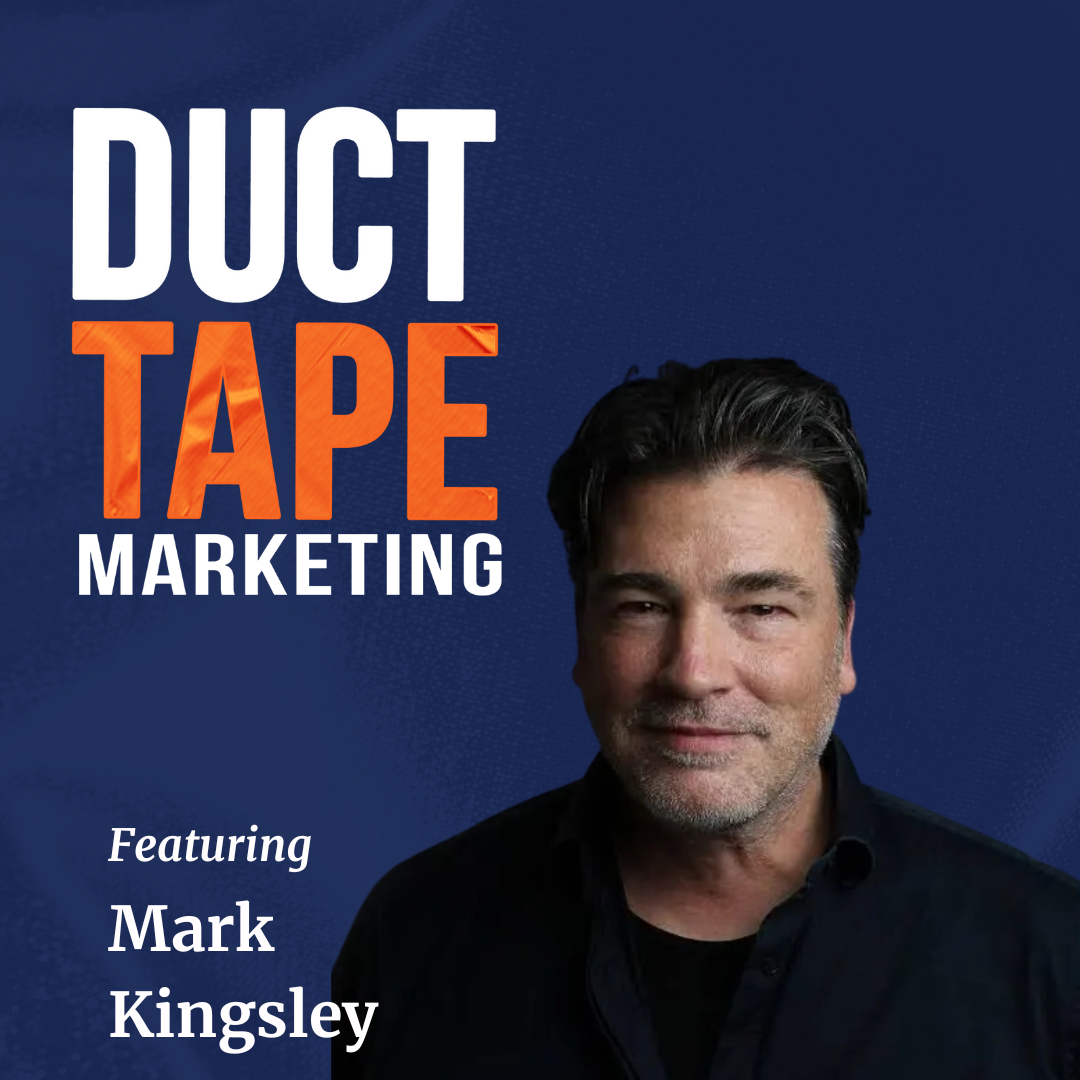 Overview
Overview Overview
Overview